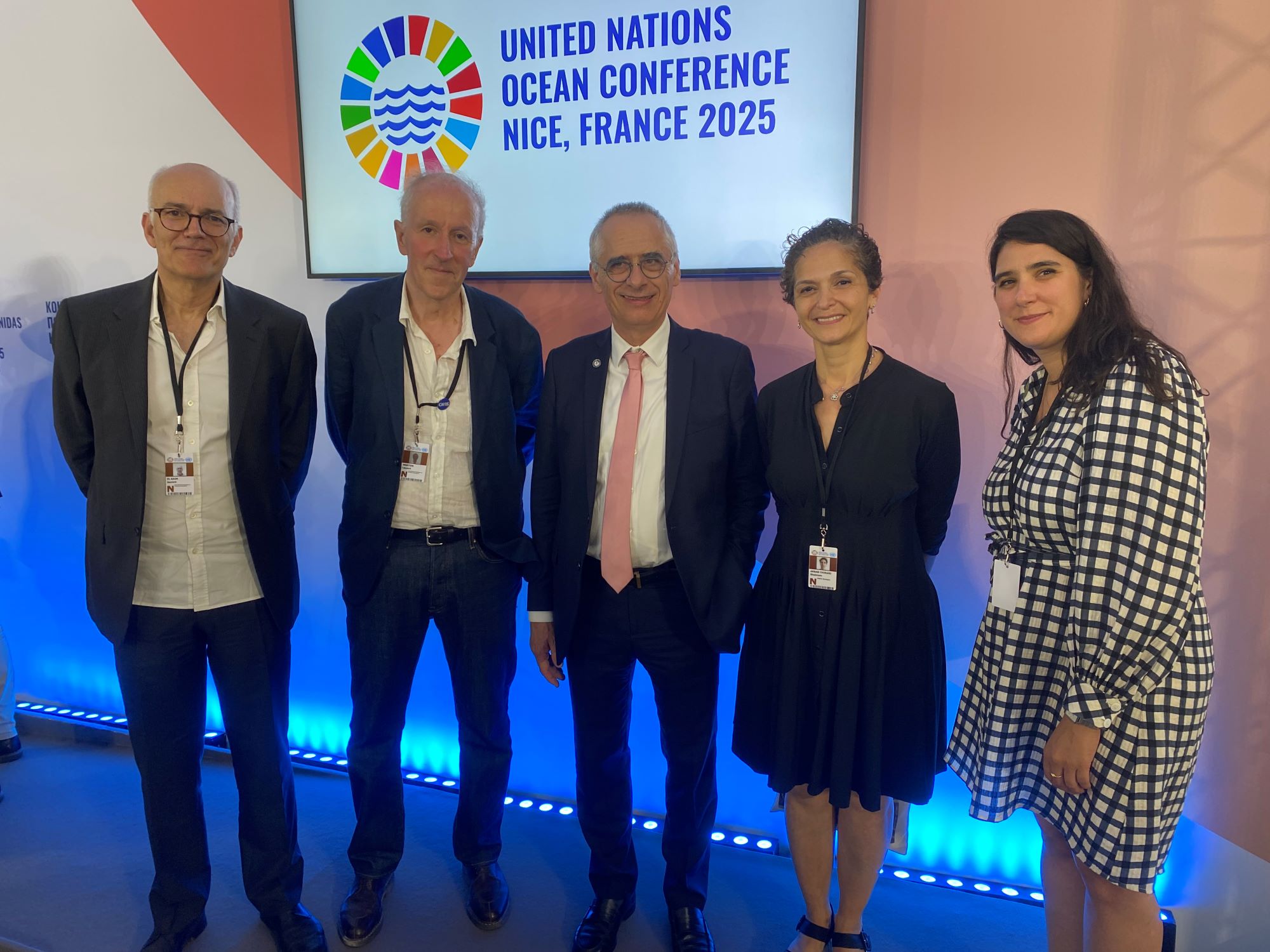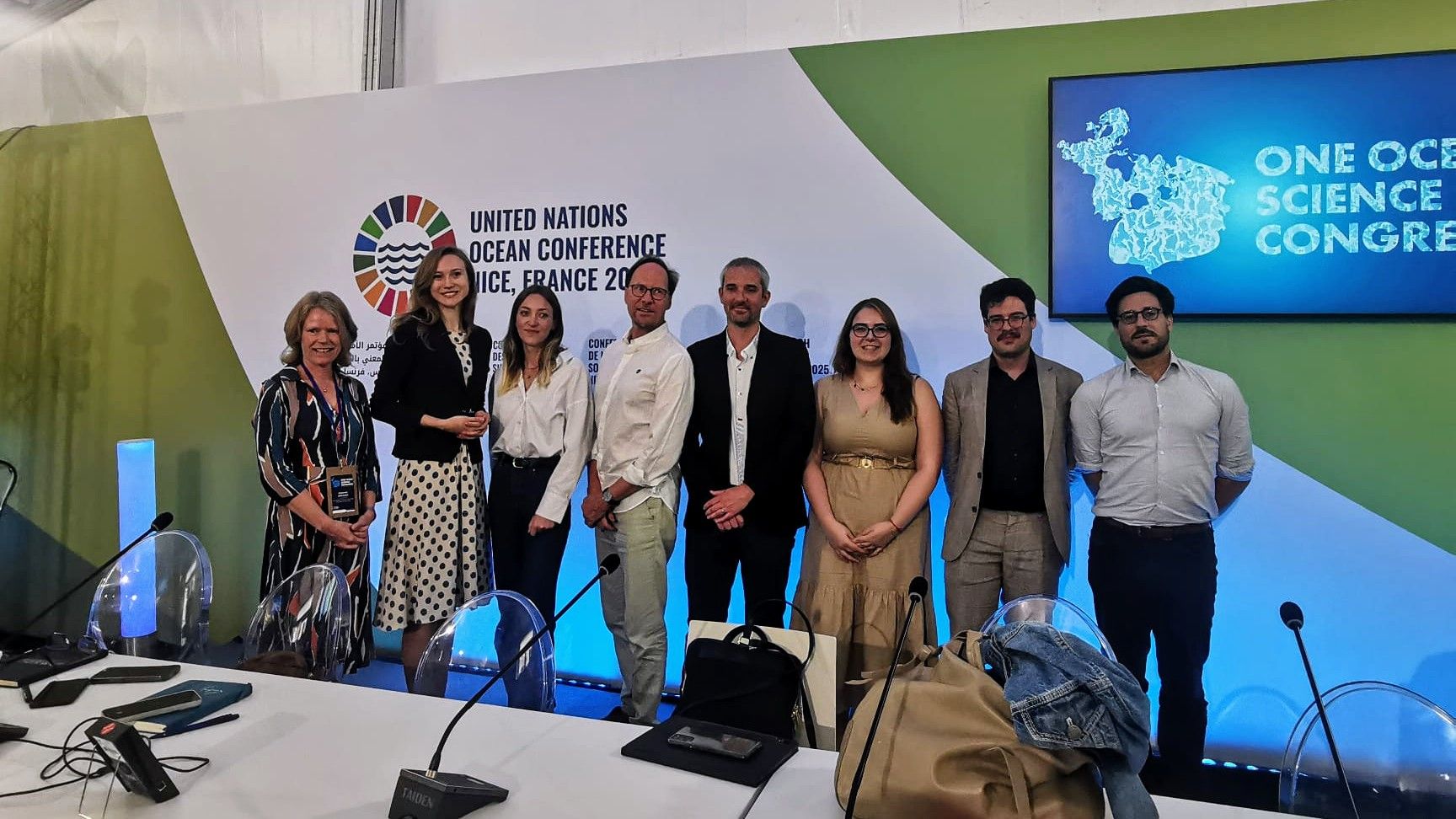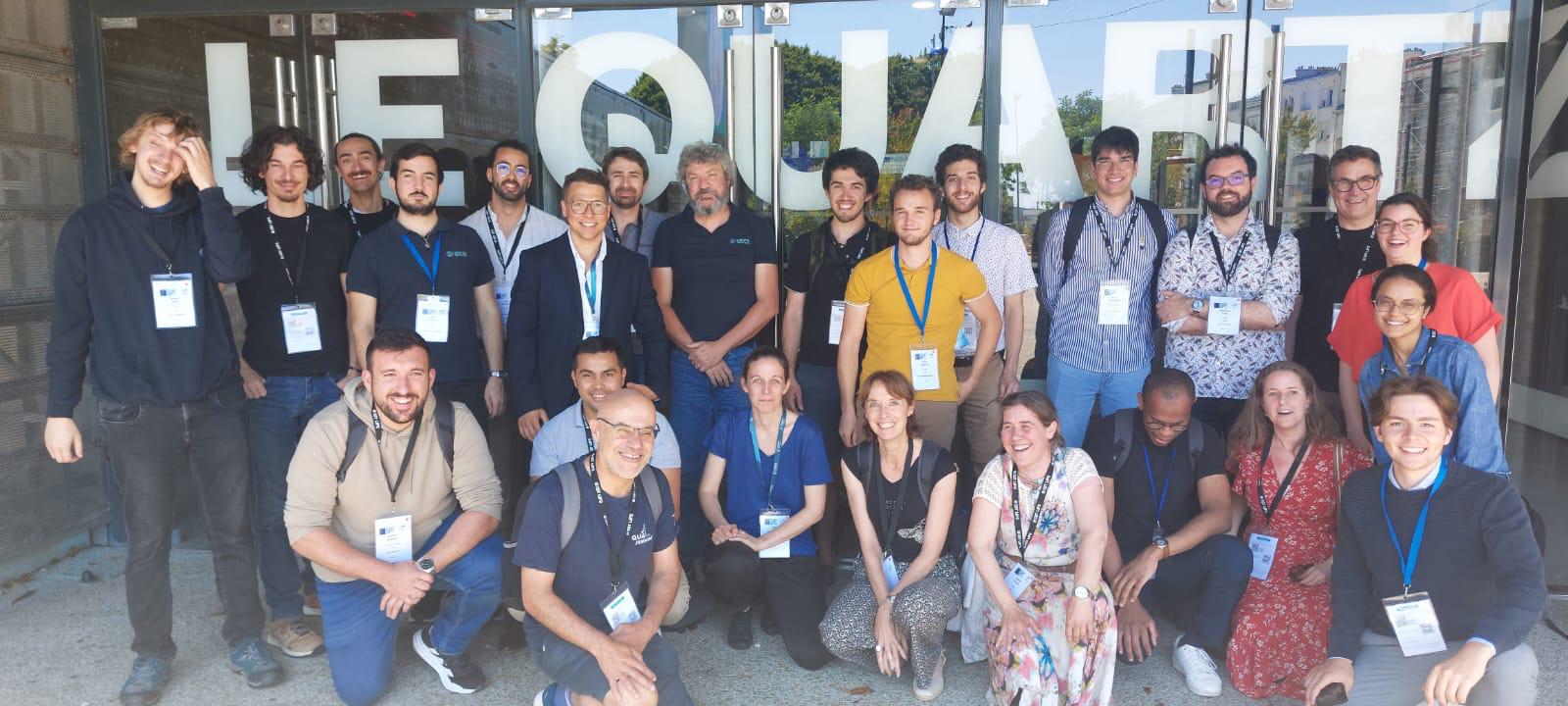The sequence began on June 3 with the opening of the “One Ocean Science Congress” in Nice, organized by the CNRS and Ifremer, with ENSTA as a partner. Two ENSTA teacher-researchers, Matthieu Sacher and Laurent Mortier, took part, presenting their research on reducing the impact of maritime transport and marine observatories.
Laurent Mortier was chairman of two sessions dedicated to European research infrastructures for the ocean and the governance of ocean observation systems. The researcher explained how the integration of numerous marine research infrastructures can make operations at sea much more efficient and less costly.
Matthieu Sacher presented his research aimed at reducing the carbon footprint of maritime transport by combining digital and experimental modeling approaches for naval engineering.
Following on from this, and also in Nice, the third United Nations Ocean Conference (UNOC3) took place from June 9 to 13, bringing together scientists, economic stakeholders, and political decision-makers to initiate concrete actions for the conservation and sustainable use of marine and coastal ecosystems.
Laurent Mortier, in his capacity as Scientific Director of the Interdisciplinary Center for Sea and Ocean Studies (CIMO) at the Institut Polytechnique de Paris, led a parallel session during which he presented the project “10,000 boats for the ocean,” which involves equipping at least 10,000 commercial vessels with technology to collect a wide range of scientific data on the oceans. This is a win-win partnership with shipowners, as by improving weather and ocean forecasts, this data will also help optimize shipping routes, helping shipowners reduce their fuel consumption and greenhouse gas emissions.
This project is being carried out in collaboration with four United Nations agencies: the World Meteorological Organization (WMO), the International Hydrographic Organization (IHO), the International Maritime Organization (IMO), and UNESCO.

This parallel session was attended by representatives from shipowners Alcatel Submarine Networks (one of the world leaders in submarine cable laying), MSC, the world's leading shipping company, Maersk, its closest rival, BIMCO, the largest association of shipowners representing 60% of the world's fleet, and GICAN, the Groupement des Industries de Construction et Activités Navales (Group of Shipbuilding and Naval Activities Industries), which brings together more than 280 companies in the French maritime sector. Also present were representatives from Eumetnet, the European meteorological network, and the European Centre for Medium-Range Weather Forecasts, the world's largest weather forecasting center.
Finally, from June 16 to 19, the OCEANS 2025 conference was held in Brest, organized by the IEEE Oceanic Engineering Society and co-chaired by Isabelle Quidu, senior lecturer at ENSTA and specialist in sonar imaging.
This year's main themes were digital twins of the ocean and the detection of debris and pollution at sea.
The conference brought together 850 scientists from around the world, who attended more than 430 presentations, including those given by 17 faculty members from ENSTA's two campuses.
Students from ENSTA's Brest campus also volunteered their time to help make the event a success.





